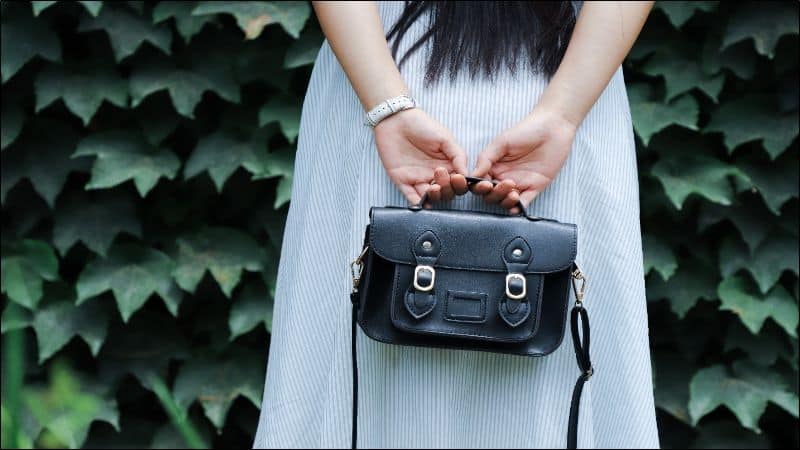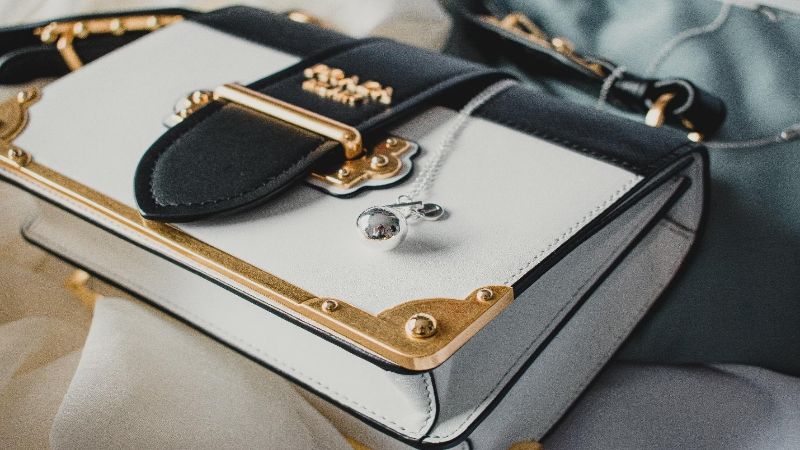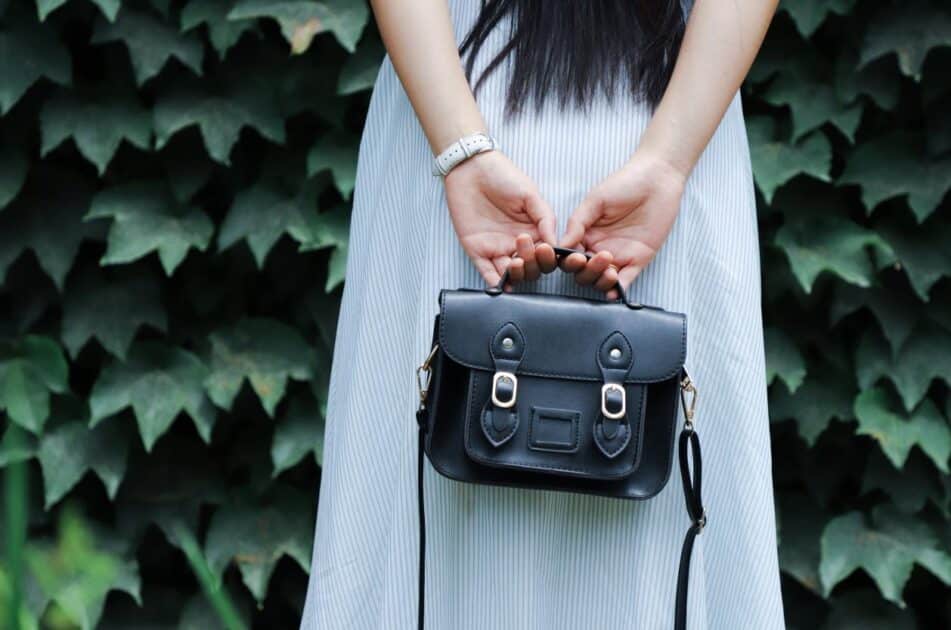Ever wondered how long your favorite handbag will stick by your side? It’s a question that pops up every time you eye that perfect new addition to your collection. Handbags aren’t just fashion statements; they’re investments, companions for life’s adventures, big and small.
Factors Affecting the Lifespan of a Handbag
Material Quality is a crucial determinant. Leather bags often endure longer than those made from fabric or synthetic materials. Your full-grain leather tote might become an heirloom, while a polyester sling could show wear within months.
Construction plays a pivotal role. Handbags with sturdy stitching, metal hardware, and reinforced corners resist everyday wear better. Examine the seams and attachment points; they should be robust and not just for decoration.
Regular Maintenance can significantly extend your bag’s life. Store your leather handbag in a dust bag, away from sunlight, to prevent drying and fading. For fabric bags, spot cleaning and occasional laundering are key to maintaining their appearance.
Usage also impacts longevity. Carrying heavy items daily can strain the bag’s straps and seams. Alternate between bags to allow them to rest and retain their shape.
Environmental Conditions should not be overlooked. Prolonged exposure to moisture can lead to mold, while excessive heat might cause certain materials to crack. Protect your handbag from the elements with suitable products or by choosing indoor storage areas.
Finally, the Frequency of Use will influence how long your bag lasts. A daily used handbag wears out faster than one used occasionally. Rotate between bags to distribute wear and avoid overloading.
Remember, the longevity of your handbag isn’t set in stone. By understanding these factors and caring properly for your bag, you’ll ensure it remains a valuable accessory for as long as possible.
Durability of Materials
When it comes to handbags, material choice is key to durability. Leather, often considered the gold standard, is prized for its toughness and ability to age gracefully. Full-grain leather, the highest quality, is particularly durable due to its intact, unaltered hide. Over time, it develops a patina that enthusiasts adore.
Here’s a quick rundown of common handbag materials:
- Full-Grain Leather: Top-tier, ages well, withstands wear and tear.
- Top-Grain Leather: Slightly sanded down, less durable than full-grain.
- Genuine Leather: Lower quality, more affordable, wears out faster.
- Canvas: Durable, lightweight, but may fade and fray over time.
- Nylon: Resistant to tears, beneficial for everyday use.
- Faux Leather: Less durable, prone to cracking and peeling.
Bear in mind that the tanning process leather undergoes also affects its durability. Vegetable-tanned leather can be stiff but lasts decades, whereas chrome-tanned leather is softer yet not as enduring.
Synthetic materials like nylon and polyester offer remarkable resilience, often resisting water and stains better than their natural counterparts. High-density versions of these synthetics are especially robust, making them ideal for heavy-duty use.
Faux leather, though not as long-lasting, offers a look similar to real leather at a fraction of the cost. It’s suitable for those who prefer vegan options, but it requires replacement more frequently due to its tendency to deteriorate faster.
Stitching and hardware are just as pivotal as the fabric. Reinforced seams and quality zippers or clasps contribute significantly to the overall lifespan of your handbag. So always check these details before you make a purchase.
Maintenance plays a part too. Even the sturdiest materials of your handbag can succumb to neglect. Regular cleaning and appropriate storage are fundamental to prolonging your bag’s life, no matter the material.
In short, your handbag’s longevity hinges not only on the quality and type of material but also on how well you care for it. Make informed choices and treat your bag with respect to ensure you get the most out of your investment.
Quality of Craftsmanship
Good craftsmanship goes beyond material choice—it’s about precision and attention to detail. When you’re hunting for a durable handbag, take a close look at the construction. High-quality bags are typically hand-stitched with strong, consistent stitches. This level of detail means the bag can hold up to more wear and tear. Mass-produced bags might compromise on this finesse, leading to premature wear.
What about the bag’s structure? Reinforced corners and edges resist everyday bumps and scratches, protecting the bag’s contents. Adequate reinforcing material within the handbag also maintains its shape and form over time. Padding on straps should feel comfortable on your shoulder, all while withstanding the weight of the bag’s contents over prolonged periods.
Consider the lining of a handbag. Quality bags often have a sturdy, tear-resistant lining, fitting snugly within the outer material without bunching up or coming loose. Look for lining materials that are smooth to the touch yet resilient, such as heavy cotton or synthetic fibers.
« Why Do Handbags Smell of Fish? Banish Odors With These Pro Tips
How to Clean Silver Hardware on Handbags: Sparkle Your Accessories »
Hardware is another pivotal point. It should feel heavy and solid, not flimsy or hollow. Zippers should glide smoothly, clasps should close with certainty, and metallic components shouldn’t show immediate signs of wear. Poor quality hardware not only affects the bag’s functionality but can also detract from its overall aesthetic appeal.
In essence, you’re investing in the durability of details, the soul of the handbag. By selecting a bag that boasts meticulous craftsmanship, you’re ensuring every aspect has been thoughtfully considered and executed. Remember, it’s the small touches that can determine whether your handbag will be a staple in your wardrobe for years or fall apart within months.
Frequency of Use and Care
When it comes to the lifespan of your handbag, how often you use it is just as critical as the material it’s made from. Daily use will inevitably introduce wear and tear at an accelerated pace compared to occasional use. It’s about finding the balance between enjoying your favorite accessory and preserving its longevity.
Consider rotating between different handbags; this isn’t only a fashion statement but a strategic move to reduce the stress on any one bag. Here’s the thing: the less you use a bag, the less it’s exposed to potential damage—both from environmental factors and from the contents you carry inside.
Proper care plays a non-negotiable role too. Regular maintenance is the difference between a bag that lasts a season and one that lasts a decade. Get into the habit of wiping your bag down with a damp cloth to remove dirt and debris. If it’s leather, invest in a high-quality leather conditioner; for synthetics, a simple cleaning routine will suffice.
Storage is key. Store your bags in a cool, dry place away from direct sunlight or heat sources. Use a dust bag or a pillowcase to ward off dust and scratches. And never, ever pile things on top of your stored bags. Keep them filled with soft stuffing to maintain shape and structure.
Here’s a quick rundown of what your care routine should include:
- Wiping with a damp cloth
- Conditioning (for leather)
- Appropriate storage away from damaging elements
- Using dust bags or pillowcases
- Filling bags with stuffing to maintain shape
Watch out for signs of excessive wear, like discoloration, fraying, or loose stitching. Address minor issues before they escalate by taking your handbag to a professional when needed. Remember, being proactive about care and mindful of frequency of use will significantly prolong the life of your handbag.
Storage and Maintenance Tips
Proper storage is crucial for preserving the shape and material of your handbag. Always empty your bag before storing to avoid unnecessary strain and deformities. Use a dust bag or a natural fabric to keep dust and moisture at bay. Stuffing your handbag with bubble wrap or acid-free paper can help maintain its shape.
Be mindful of the storage environment. Avoid places with high humidity or direct sunlight, as these can cause your handbag to fade, dry out, or develop mold. Ideally, your storage space should be cool and dry with good air circulation.
When it comes to maintenance, regular cleaning is key. Every few weeks, wipe down your handbag with a soft, damp cloth. If it’s leather, consider a specialized leather conditioner to keep the material supple. Beware of harsh cleaners that can damage the fabric or discoloration.
For hardware like zippers and buckles, use a dry cloth to polish and prevent tarnish. Ensure moving parts are free from debris to avoid wear and tear.
Address repairs promptly. If you notice loose threads or hardware, take your handbag to a professional for repair. Delaying could lead to greater damage, which might become irreparable.
Lastly, minimize heavy items to avoid stretching the straps or material. A handbag is for essentials, not everything you own. Heavy loads can quickly lead to wear and force you to retire your bag before its time.
Keeping these tips in mind, you can extend the life of your handbag significantly. Regular maintenance and smart storage go a long way in keeping your favorite accessory by your side for years.
Conclusion
So there you have it! With the right care and a bit of love, your handbag can be a long-lasting companion on your many adventures. Remember, it’s not just about the quality of the bag but also how you treat it. Regular maintenance, careful storage, and mindful usage are the trifecta for handbag longevity. Don’t wait for signs of wear and tear to show before you give your bag the TLC it deserves. Treat it well from the start and it’ll repay you with years of style and functionality. Keep that handbag looking chic and it’ll be sure to turn heads for all the right reasons for seasons to come. Happy toting!
Frequently Asked Questions
What factors affect the lifespan of a handbag?
The lifespan of a handbag is influenced by several factors including material quality, construction, regular maintenance, frequency of use, and environmental conditions. Proper care and understanding these factors are essential for ensuring longevity.
How does material choice impact a handbag’s durability?
Material choice is crucial for durability. Leather, especially full-grain and top-grain, is valued for toughness and aging gracefully. Synthetic materials like nylon and polyester are very resilient, while faux leather offers less durability but is cost-effective.
Why is the tanning process significant for leather handbags?
The tanning process is important because it affects the leather’s durability and how it ages. Quality tanning can improve the leather’s resistance to the elements and extend the handbag’s lifespan.
How does craftsmanship contribute to a handbag’s durability?
Craftsmanship ensures precision and attention to detail in a handbag, like reinforced corners, sturdy straps, and high-quality hardware. These aspects can significantly affect whether a handbag will last for a long time or fall apart quickly.
Is it necessary to maintain handbags regularly?
Yes, regular maintenance is essential. Cleaning, using conditioners for leather, polishing hardware, and timely repairs can prevent minor wear and tear from escalating and thus prolong the handbag’s lifespan.
What storage tips can help preserve a handbag’s shape and material?
To preserve the shape and material of your handbag, empty it before storage, use a dust bag or natural fabric cover, stuff it with bubble wrap or acid-free paper, and store it in a cool, dry place with good air circulation, avoiding high humidity or direct sunlight.
Can how I use my handbag affect its longevity?
Absolutely. Rotating between handbags, avoiding overloading, and addressing repairs promptly can all prevent excessive wear and preserve the handbag’s longevity.











